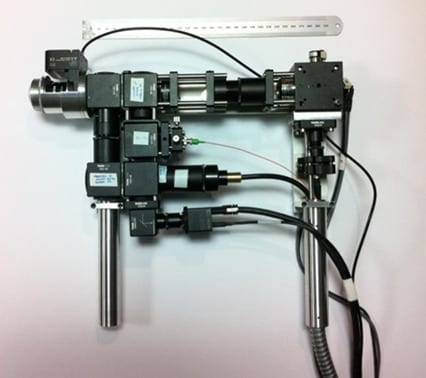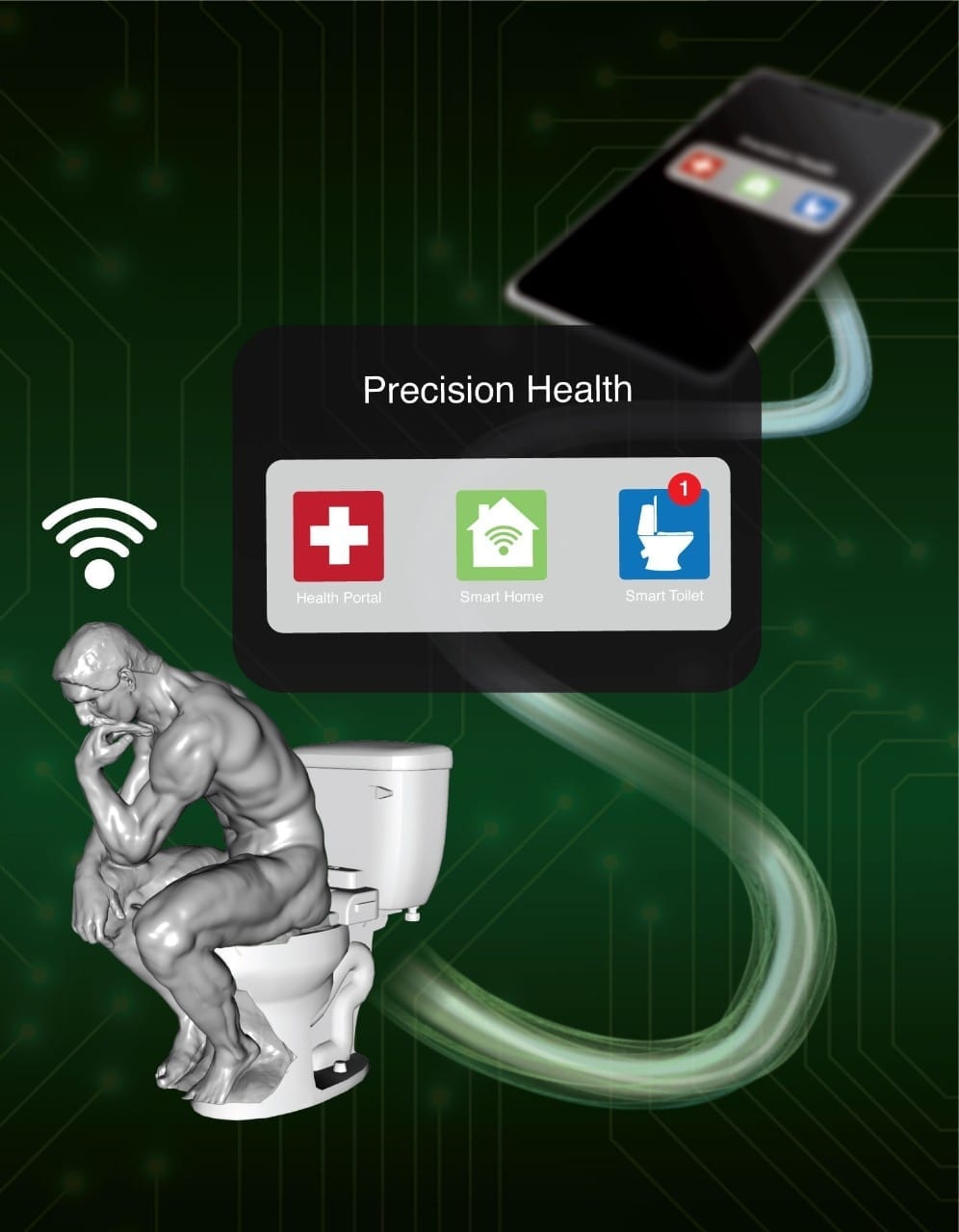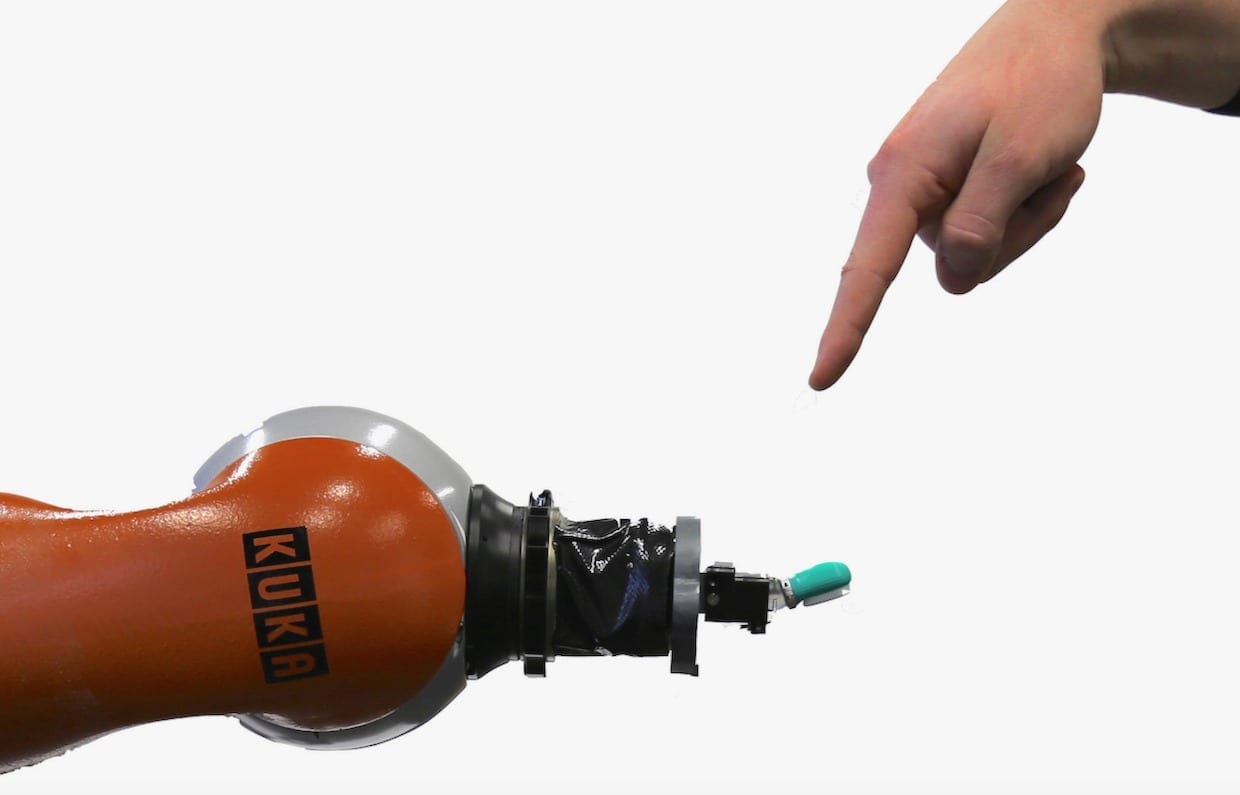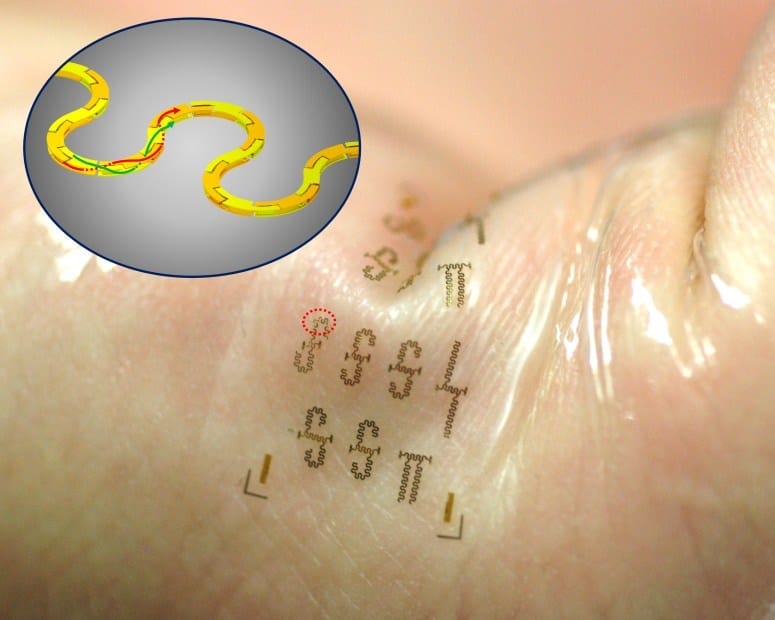
Imperial College London
Two new optical devices could reduce the need to take tissue samples during medical examinations and operations and to then send them for testing – potentially speeding up diagnosis and treatment and cutting healthcare costs.
One is a lightweight handheld microscope designed to examine external tissue or tissue exposed during surgery. One example of its use could be to help surgeons compare normal and cancerous cells (during an operation). A key advantage is that the device can acquire high quality 3D images of parts of the body while patients are moving (eg due to normal breathing), enabling it to be applied to almost any exposed area of a patient’s body.
The second instrument, a tiny endoscope* incorporating specially designed optical fibres and ultraprecise control of the light coupled into it, has the potential to be inserted into the body to carry out internal cell-scale examination, for example during neurosurgery. Ultimately, this new approach may be able to provide high resolution images enabling surgeons to see inside individual cells at an adjustable depth beneath the surface of the tissue.
Both prototypes have been developed by Imperial College London in collaboration with the University of Bath and funded by the Engineering and Physical Sciences Research Council (EPSRC).
Currently, the diagnosis of many diseases requires taking a tissue specimen from the patient, preparing it in a laboratory, studying it under a microscope and then forwarding the results back to the clinician. The new devices, both of which harness a technique known as multiphoton excited fluorescence microscopy** to analyse individual cells in their native tissue, could be used in a consulting room or an operating theatre to help clinicians identify diseased tissue and provide a rapid diagnosis.
The handheld microscope incorporates a tracking mechanism that compensates for the patient’s movements, ensuring the generation of steady images. The endoscope is just a fraction of a millimetre in diameter and has no moving parts. Both these devices use novel multicore optical fibres developed by Imperial’s collaborators by the University of Bath.
Dr Chris Dunsby of Imperial College London, who has led the overall project, says:
These new devices open up exciting possibilities in the field of in-situ diagnosis and could help improve patient care in the future.
Professor Jonathan Knight, who led the University of Bath team, says: This has been a very exciting project which has enabled us to develop fibres with performance which we would have previously thought impossible.
After further development and refinement of the technology, clinical trials will explore the healthcare benefits of the two devices in more detail, with the goal of beginning to introduce them into clinical use within around 5-10 years.
Learn more: New multiphoton microscopes could speed up disease diagnosis
The Latest on: Disease diagnosis
[google_news title=”” keyword=”disease diagnosis” num_posts=”10″ blurb_length=”0″ show_thumb=”left”]
via Google News
The Latest on: Disease diagnosis
- What is brittle bone disease? Types, causes, symptoms and treatmenton May 2, 2024 at 11:34 pm
Image Source : FREEPIK Know about the causes, symptoms and treatment of brittle bone disease. Brittle bone disease, or osteogenesis imperfecta (OI), is a rare genetic disorder affecting the bones. It ...
- Selena Gomez recalls how some people didn't want her to reveal her bipolar diagnosison May 2, 2024 at 6:07 pm
Gomez has been honest over the years about what it’s like to live with a chronic illness and mental health issues.
- Santé South Wine Festival raises awareness about Alzheimer’s diseaseon May 2, 2024 at 5:05 pm
There are more than 62,000 Mississippians currently living with Alzheimer’s disease who are 65 and older. The number is actually much larger because not ...
- Bird flu likely circulated in US cows for four months before diagnosis -paperon May 2, 2024 at 1:58 pm
Bird flu likely circulated in U.S. dairy cows on a limited basis for about four months before federal officials confirmed the disease that has now spread to nine states, according to a new federally ...
- Mom’s memory loss and tingling were dismissed by 14 doctors. It was neurologic Lyme diseaseon May 2, 2024 at 10:12 am
After three years, she was diagnosed with Lyme disease. “It was terrifying to constantly be told there’s nothing wrong with you,” Stein says. “I am 14 years into this journey, and I would say my life ...
- A young Duke professor won $250,000 for her algorithms that could find symptoms of heart disease when they starton May 1, 2024 at 2:47 pm
Duke University professor Amanda Randles won for her work with supercomputers and algorithms, creating blood flow simulations to treat patients.
- Is Lyme disease curable? Here's what you should know about tick bites and symptoms.on April 30, 2024 at 4:37 am
For most people, Lyme disease is cured with 2-4 weeks worth of antibiotics. However, some people may have lingering damage and symptoms.
- Kidney disease: How to protect yourself and the symptoms the NHS may not spoton April 29, 2024 at 4:00 am
The UK is facing an unprecedented kidney disease crisis, one which could cost the NHS up to £11 billion per year by 2033 if left unchecked. This is due to the number of patients with chronic kidney ...
- A warning for hunters as 'zombie deer disease' spreads to another state: Mapson April 29, 2024 at 3:06 am
Fatal 'zombie deer disease' was suspected in deaths of two deer hunters. Maps show where the disease has spread in the United States.
- Cancer trends revealed, including most common types of the disease and biggest risk factorson April 29, 2024 at 1:30 am
USAFacts, a Washington-based nonprofit that compiles and reports on government data, took a deep dive into the latest cancer data to identify trends. Here are the key findings.
via Bing News










